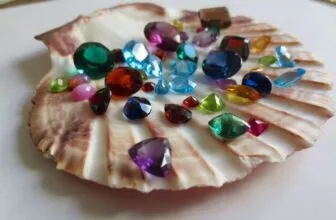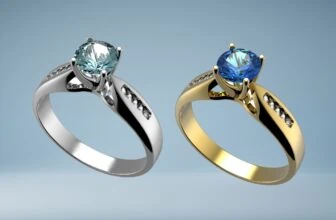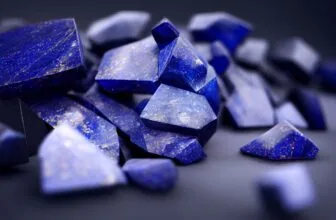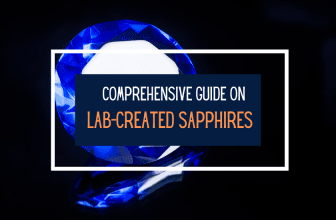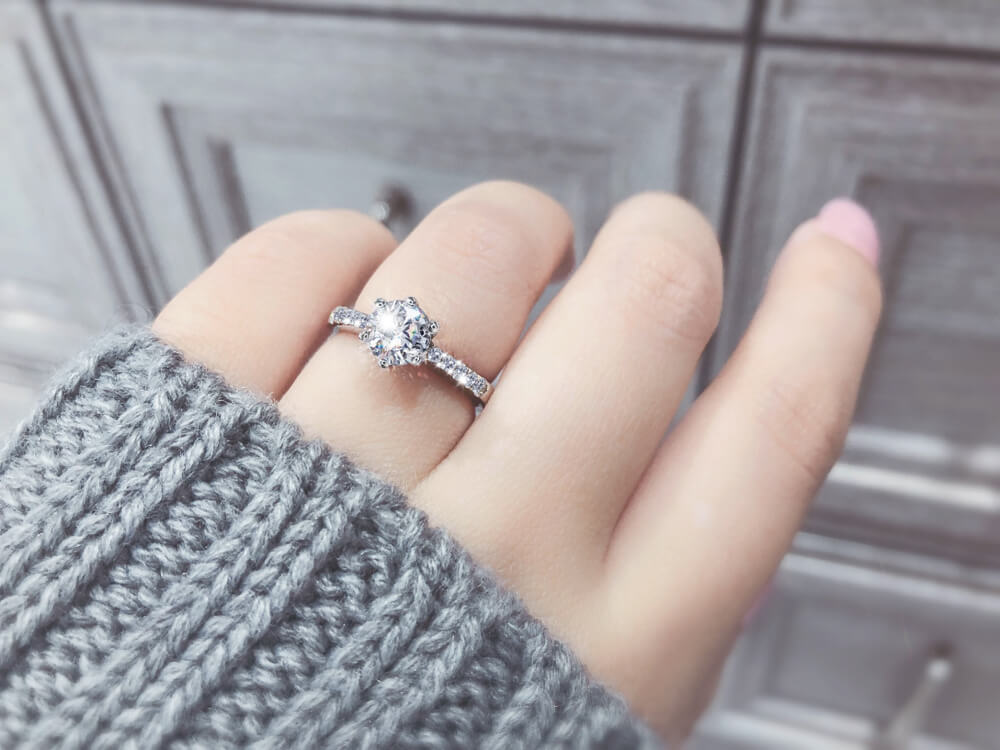
Table of Contents
There are lots of things that can be said about diamonds – about their beauty, about their rarity and value, and about all other technical specifics that make them so popular. We try to cover all of those features on this site to help you find the best possible diamond for you.
We likely won’t be able to cover everything there is to know about them here but if you’re as spellbound with diamonds as we are, here are 20 other interesting things you might be interested to know about diamonds.
1. Some stars are made out of diamonds
Jewelry-grade brilliant diamonds are pretty rare but the carbon diamonds are made of isn’t. So, it’s fair to expect that there would be diamonds elsewhere throughout the universe as well – on planets and moons, even on asteroids. But in stars? Astronomers have concluded that white dwarf stars contain cores made of solid diamonds due to how they are formed.
This means that the largest diamond in the universe we know of so far weighs the incredible 2.27 thousand trillion tons and holds up to 10 billion carats in weight.
2. One such “space diamond” is even called Lucy
“Lucy in the Sky with Diamonds” is one of the most famous Beatles songs and its name came to reality in 2007 when the Havard-Smithsonian Center for Astrophysics called a 10 billion-trillion-trillion carat diamond planet “Lucy”. The plant is located fifty light-years from Earth and its core is made out of oxygen and carbon that have been crushed into crystalline form due to their own gravity pull.
3. Diamonds were believed to have healing properties in the Middle Ages
If you thought that “crystal healing” is a new belief among people you might be surprised that diamonds were also once thought able to cure ailments as well. Things such as fatigue and mental illness were said to be curable with diamonds. Unfortunately for people, diamonds were so incredibly rare at the time that few had the chance to test their theories.
4. Diamonds were also said to give physical strength to their wearer
Wearing diamonds on your battle armor may seem silly from today’s point of view but many kings used to ride into battle with diamonds on their helmets, chestplates, and gloves. They did that not because they had diamonds to spare or because they wanted to look fabulous on the battlefield, but so they could benefit from the perceived strength-imbuing properties of diamonds. Of course, science hasn’t proven that this works but if people believed it did they very well might have gotten an extra boost of courage thanks to the shiny stones on their armor.
5. The word diamond comes from the Greek word “adamas”
Adamas means “indestructible” and “invincible” which suits diamonds pretty well considering that they are the hardest natural substance on the planet. They can shatter under enough force, but the only natural thing that can scratch a diamond is another diamond.
6. Ancient Greeks and Romans believed diamonds were the tears of the gods
Many Greeks and Romans thought that the gods cried diamonds into the Earth while others believed diamonds were splinters from falling stars. It’s actually true that “space diamonds” are sometimes found in meteorites so this is technically more than just a myth.
7. The ancient Romans also thought Cupid’s arrows were tipped with diamonds
This is probably one of the earliest associations between diamonds and romantic love. It also speaks of how incredibly hard diamonds are as an arrow tipped with diamonds would indeed be something to keep an out eye for.
8. The famous Eurika diamond was discovered by a 15-year-old boy
Erasmus Stephanus was just 15 years of age in 1867 when he discovered the Eurika diamond in South Africa. The rough stone measured at 21.25 carats at the time when Erasmus found it on the Orange River near Hopetown. Today, the polished stone weighs 10.73 carats and it’s cut in a brilliant cushion shape. It’s currently in display in the Kimberley Mine Museum in South Africa after its last owner the De Beers Group donated it in 1967 – on the 100th anniversary of the diamond’s discovery.
9. Diamonds lose up to 50% of their overall weight when polished
If you were startled when you found out how much weight the Eurika diamond lost when it was polished, rest assured that this is actually normal. While making sure that the cut diamond is as big as possible is important, the main goal of diamond cutting is to maximize the stone’s brilliance, clarity, and sparkle. This usually means cutting off a great deal of the diamond rough in order to get the best possible cut out of it. The round brilliant cut – the most popular diamond shape out there – is one of the most wasteful cuts because there’s extra rough that needs to be removed to get a perfectly round shape.
10. Finding diamonds in rivers was how these stones were first “mined”
Today most diamonds are mined underground, often with the help of heavy digging and mining machinery. The first diamonds weren’t found this way, as ancient people didn’t have the equipment and capabilities to mine for diamonds in such a manner. Instead, most ancient diamonds were found by people sifting through the banks and bottoms of rivers. The practice is called alluvial mining and it’s still done today. It’s mostly profitable for individual miners in South America and Africa, however, as most bigger companies find it inefficient compared to other mining methods.
11. Ancient Hindus used to decorate the eyes of statues with giant diamonds
People in the past may have been technically “poorer” than people in the modern world but that didn’t stop them from using the biggest diamonds they could find as eye decoration for their devotional statues. The practice was supposed to guarantee protection from danger, among other religious benefits.
12. The main sources of diamonds change over time
Most people today think of several African countries when they hear about diamond mining, probably South Africa most of all. Diamonds have been mined throughout the world over the ages. In the 1400s India was the world’s foremost source of rough diamonds with most of their diamonds being sold to multiple European diamond trade centers.
In the 1700s India’s diamond supplies started to decline, however, and Brazil rose to be the world’s main source of diamonds. Just a century later, in the 1800s, huge diamond reserves were discovered in South Africa and that changed the diamond mining landscape again. At the beginning of the 21st century, diamonds are mined all around the world, especially after the industry’s reorientation toward conflict-free diamonds and the establishment of the Kimberley Process.
13. The Cullinan diamond was the largest diamond ever mined
Weighing the astonishing 3106 carats or 1.33 pounds, the Cullinan diamond was a sight to behold. It was discovered in South Africa in 1905 and it was given as a gift to Britain’s King Edward VII. The king had the diamond cut by the Asscher Brothers in Amsterdam (those of the Asscher cut) into 9 large diamonds and 100 smaller ones. The three largest diamonds are still on display in the Tower of London.
14. The tradition of the diamond engagement ring can be traced back to 1477
Archduke Maximillian of Austria was the first person to give a diamond engagement ring to someone, thus establishing the tradition to this day. The recipient of this ring was Mary of Burgundy and the gold ring had the letter M spelled out in diamonds in her honor.
15. Candle flames contain millions of small diamonds
According to chemistry professor Wuzong Zhou from the University of St Andrews, candle flames contain ~1.5 million diamond-like nanoparticles. Sure, they may not be something we can mine and fashion into jewelry but they do bring even more romance to a candlelight dinner with a loved one.
16. Scientists have figured out how to turn the remains of people into diamonds
There are more and more new ways to bury people nowadays – from cryonics to birthing pods that grow trees out of people. One such fascinating new way is to compress the ashes of someone who’s passed away and has been cremated, into a man-made diamond. It’s probably not the most eco-friendly way to go about it but it’s definitely romantic.
17. Diamonds form ~100 miles below the surface of the Earth
Diamonds are incredibly old as the natural formation of a diamond usually takes billions of years. Some diamonds can be “younger” and only take several million years to form while man-made diamonds are grown much quicker in labs, however, most natural diamonds are almost as old as the Earth itself. They also form much deeper into the Earth’s crust than we can possibly reach but are slowly pushed to the surface by periodic deep volcanic eruptions.
18. Diamonds weren’t only inaccessible to the common people – they were forbidden
As recently as the 20th century in France there was a law that allowed only royalty to wear diamonds. If you were a commoner or even an aristocrat with no royal blood, diamonds were off-limits for you, regardless of whether you could afford them or not. This law included other precious gemstones too and being found with an expensive and rare gemstone as a diamond could result in serious consequences. This only changed after the South African diamond deposits were found and diamonds became much easier to obtain.
19. Natural colored diamonds are a thing
We’ve talked about them a couple of times on this site but many people are still unaware that there actually is such a thing as a natural fancy colored diamond. Yes, being comprised of 100% carbon, diamonds are typically colorless and whatever color they have is due to various chemical or physical inclusions. However, there are natural diamonds that have stunning solid colors such as yellow, green, brown, orange, blue, purple, black or the rarest and most coveted – red diamond, due to the trace elements in them.
20. Diamonds have been coveted by humans for thousands of years
They may have only recently become common enough for most people but diamonds have been known to man for at least centuries before the Common Era. There’s evidence of diamonds being traded in India in the fourth century BCE and the Roman naturalist Pliny said in the 1st century AD that “Diamond is the most valuable, not only of precious stones, but of all things in this world.”


